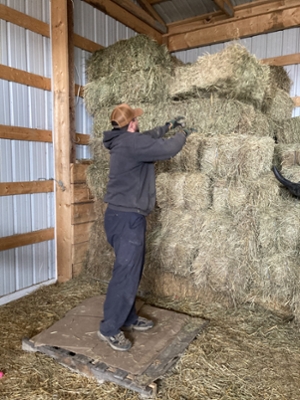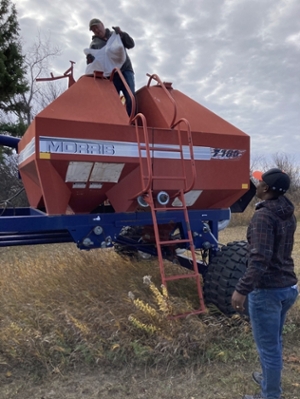Defining upper limb postural exposures during high-risk farm tasks
Study Description

Work-related musculoskeletal disorders (MSDs) are extremely common in agricultural producers. In Canada, and in Saskatchewan specifically where 40% of national farming production occurs, up to 85% of farmers and farm workers report pain in at least one body part. Our recent research suggests that upper limb (shoulder and neck) MSDs were among the most frequently experienced by farmers of both sexes and a wide age range, but upper limb MSD research in producers is limited.
Additionally, even though the proportion of women producers is increasing, as well as the average age of producers, there is little indication of how sex or advancing age may influence upper limb MSD risk factors in producers.
The goal is this project is to 1) define typical postures and kinematics for producers with and without shoulder or neck pain during high-risk farm work tasks and 2) explore how upper limb kinematics during select farm work tasks are influenced by sex and age.
The ultimate aim of this research is to reduce the burden of upper limb MSDs for agricultural producers through improved definition of postural exposures to inform potential mitigation strategies to allow them to continue working without pain, time loss from work, or further injury.
We would like to thank all the participants who volunteered their time to study.
More Information
Our study has been highlighted by the media! Please see the following links for more information:

If you would like to explore some of the outcomes of our research please check out the farm shoulder resource below.
We would also like to thank WorkSafeBC and the University of Saskatchewan's College of Medicine for funding this research.

